We’ve been knocking off some of the more tedious chores the past two or three weekends. Things like cleaning out the shed (my boys), cleaning the eaves troughs (me) and washing siding (also me).
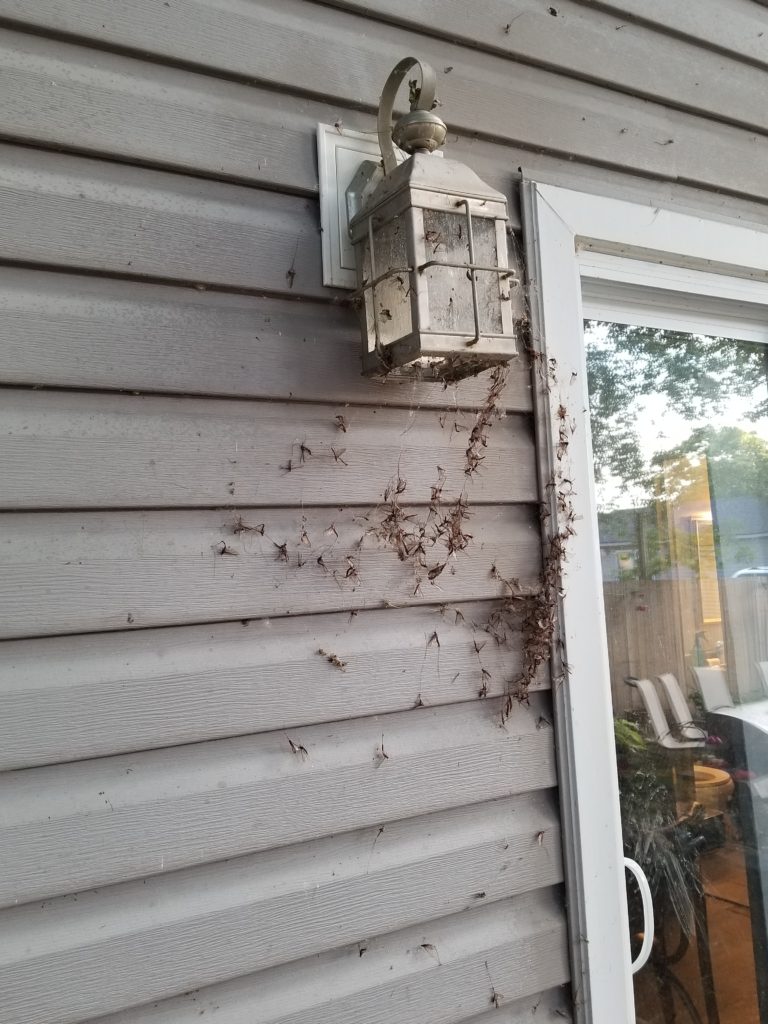 All that is left for the siding is the front of the house and deck. Then it’s bye-bye swag of yuck. Fish flies seem to be done in my area, even if they’re still going strong elsewhere – like this ball game that had to be called because of fish flies – Windsor ball game called on account of fish flies
All that is left for the siding is the front of the house and deck. Then it’s bye-bye swag of yuck. Fish flies seem to be done in my area, even if they’re still going strong elsewhere – like this ball game that had to be called because of fish flies – Windsor ball game called on account of fish flies
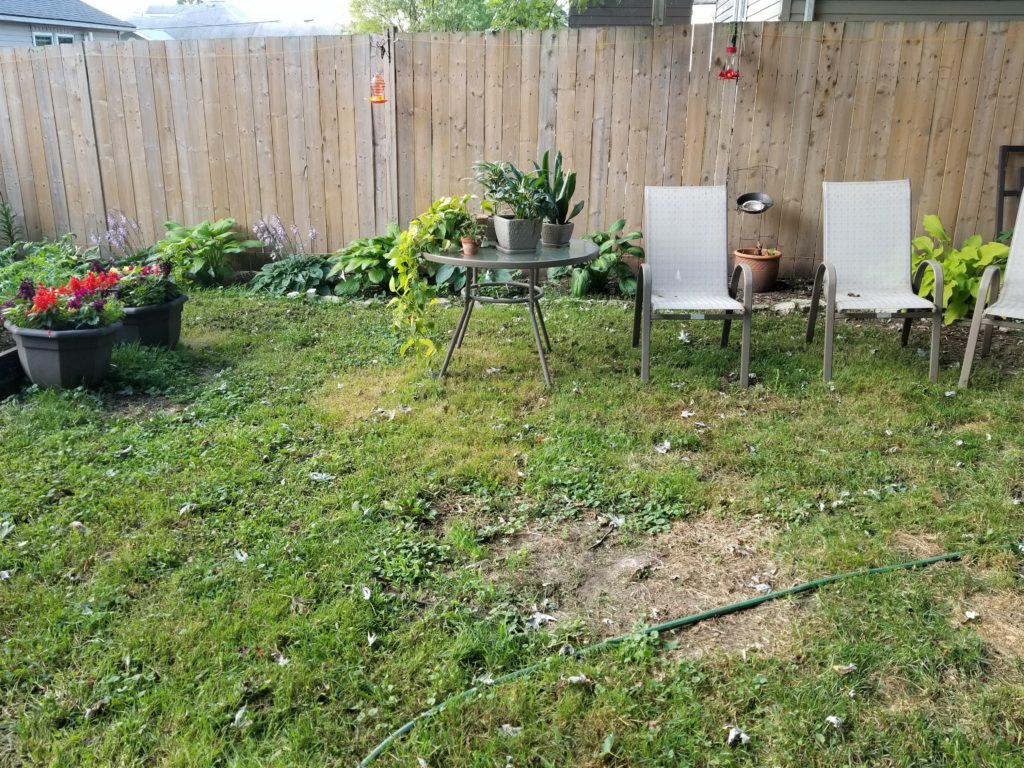
Yesterday I scrubbed down all the outdoor furniture – I’ll move it back once the front of the house is respectable again. This is actually where I hope to someday move my patio so I can sit with my coffee in the morning and admire my gardens. Maybe watch some hummingbirds and orioles at the feeders.
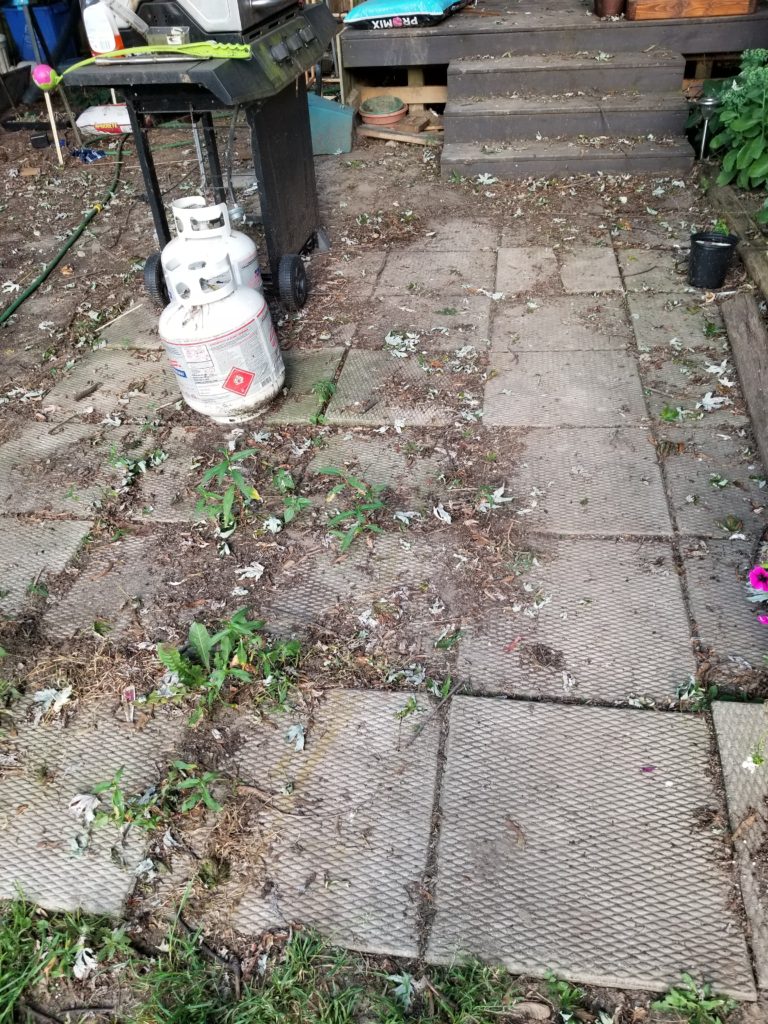
Right now it’s off the deck and just isn’t working. First because it wasn’t installed properly – it should have had a bed of sand underneath to level it out. Second, because of the location. It should be a path there to elsewhere rather than a destination.
Ho
What’s blooming?
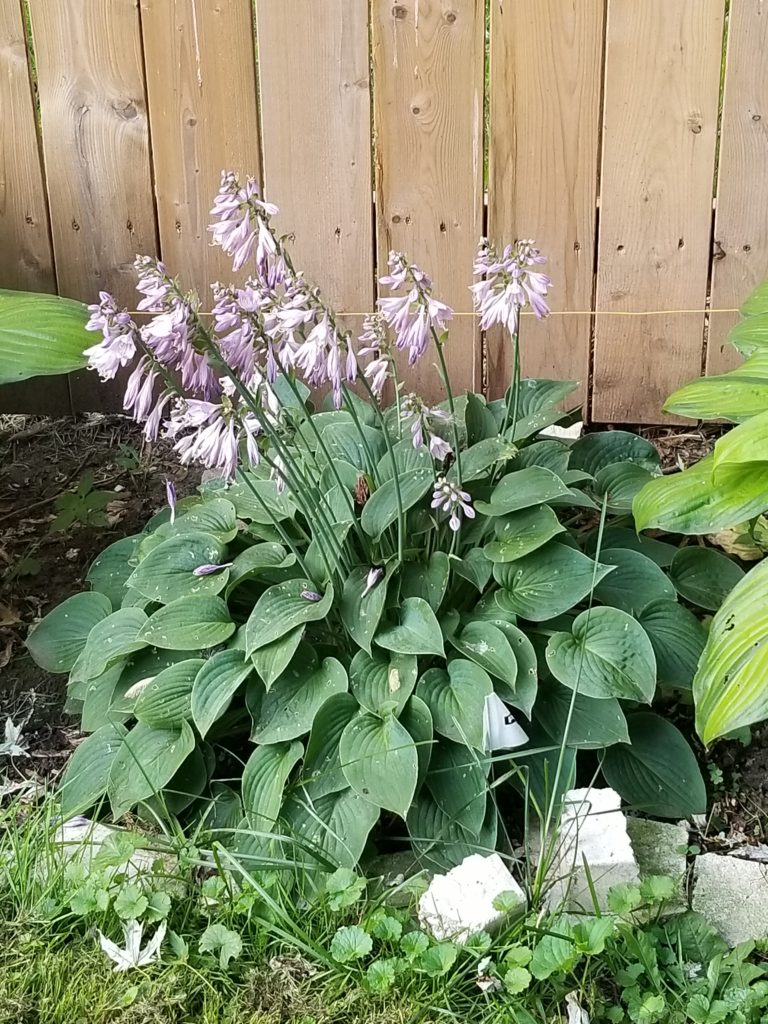
Hosta ‘Blue Cadet’ is in flower and doing it gloriously. Blue Cadet is a spreader so even in my relatively young gardens, there’s quite a bit of it. As you can see, it is generous with the flowers too.
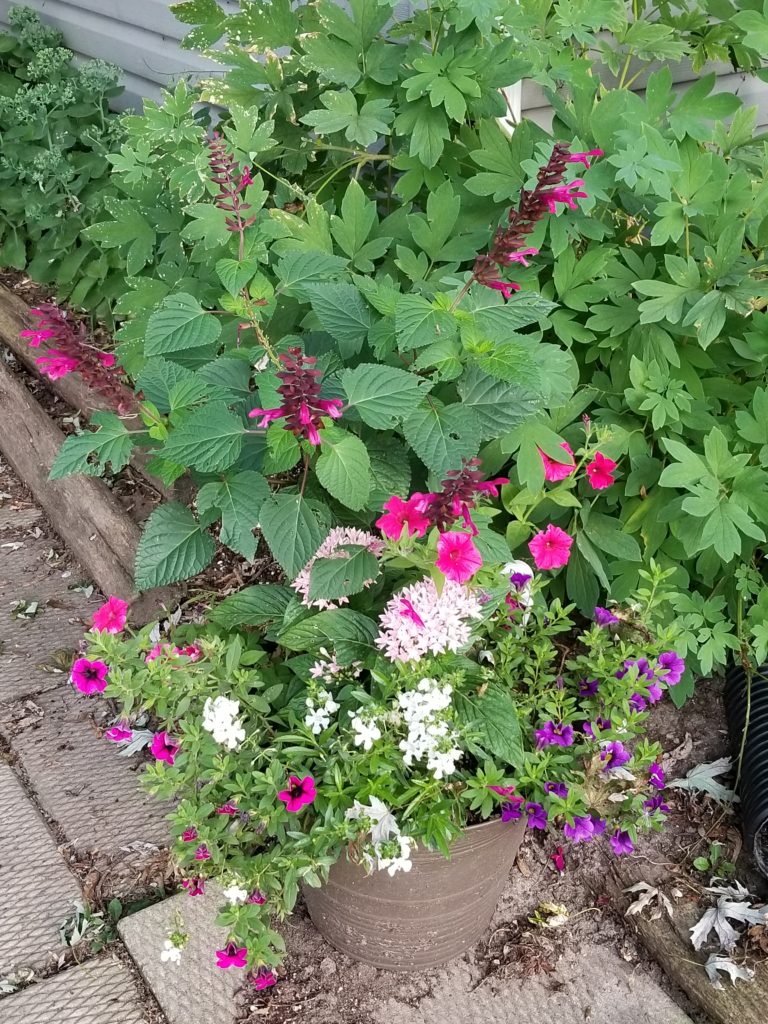
This is another one of my planters that is finally all in bloom. Other than the Angelonia it is entirely PW varieties. Salvia ‘Rockin’ Fuchsia’, Penta ‘Sunstar Pink’, Supertunia ‘Vista Paradise’, Calibrachoa ‘Superbells Compact Blue’ and ‘Superbells Blackcurrant Punch’. The Penta doesn’t really fit, but it had to go somewhere!
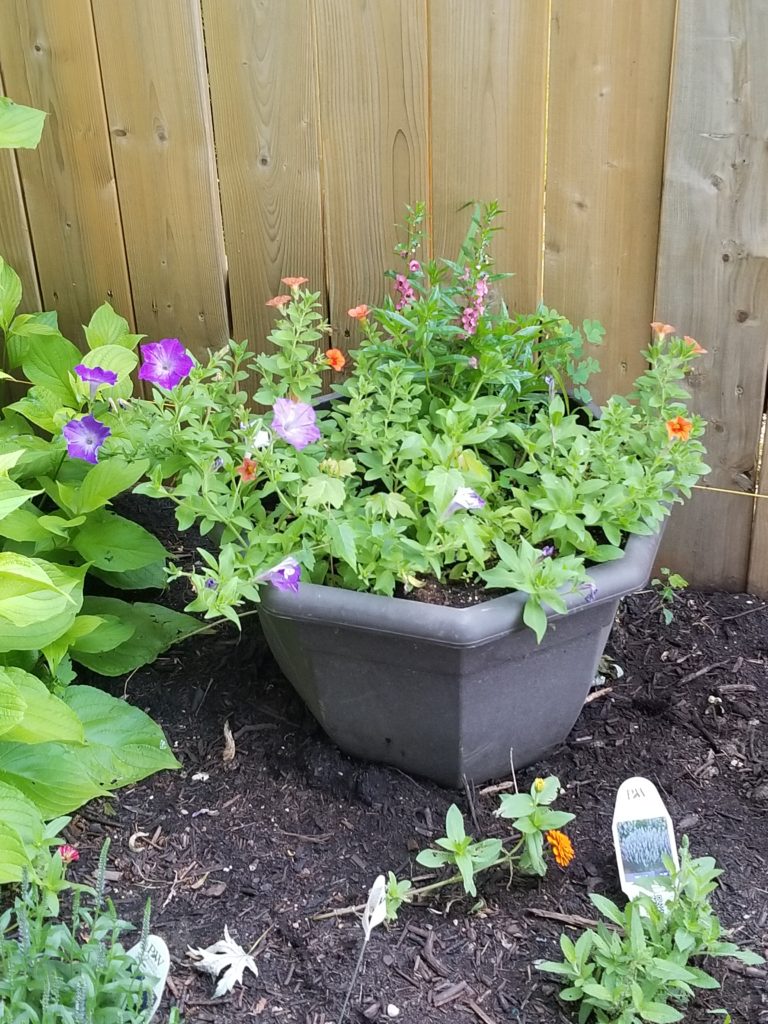
I hesitated to share this one because the color of the petunia doesn’t photograph accurately – at least not on my phone. The petunia is Wave Lavender Sky Blue along with Angelonia ‘Serenita Rose’ and Calibrachoa ‘Kabloom Orange’. The Petunia is really more blue – almost fluorescent it’s so bright and the Calibrachoa is really a far more intense orange.
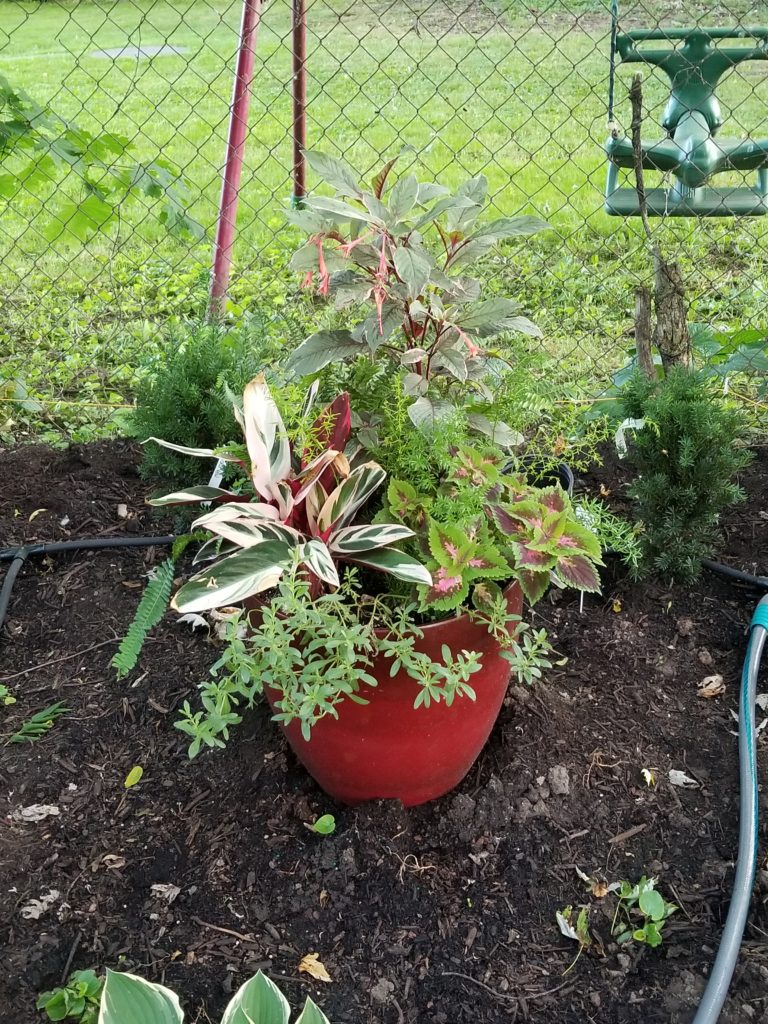
As expected the Calibracho in this planter has stopped blooming. There really isn’t enough sun for it here, but that’s why foliage is so important for shade gardens. I mean honestly, with all that color who needs flowers?
And then it rained…
We had a hard rain last weekend that really knocked around some of my plants.
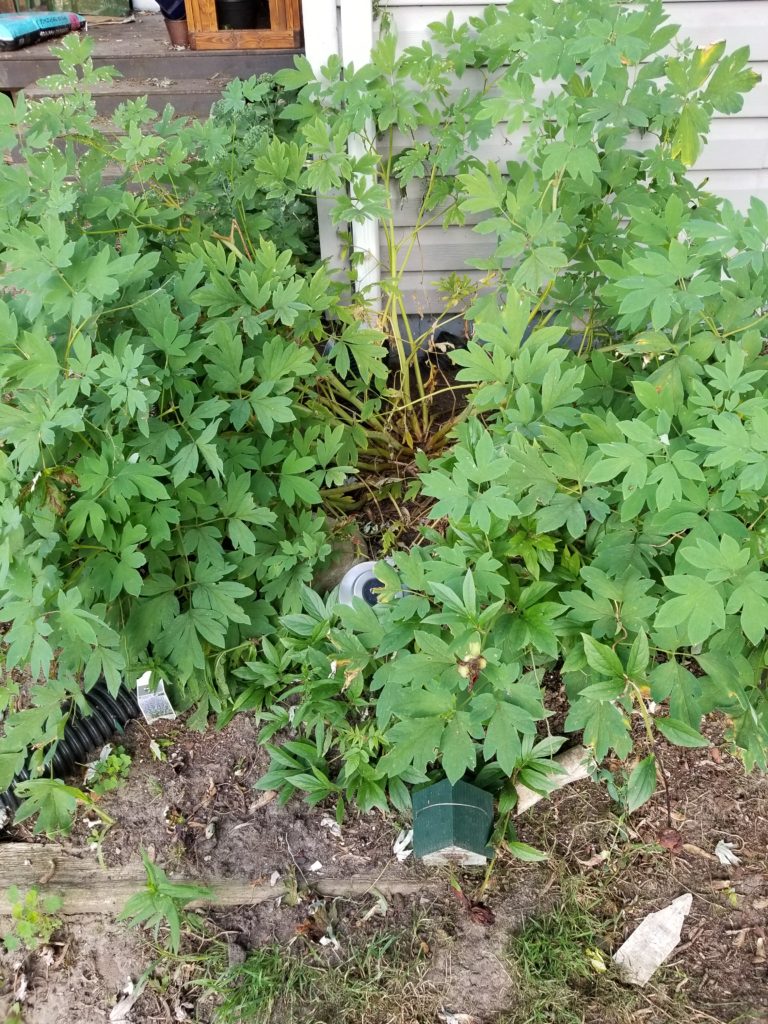
The bleeding heart split down the middle and will need to be cut back. Thankfully I still have a few annuals I can stick in the gaping hole it will leave.
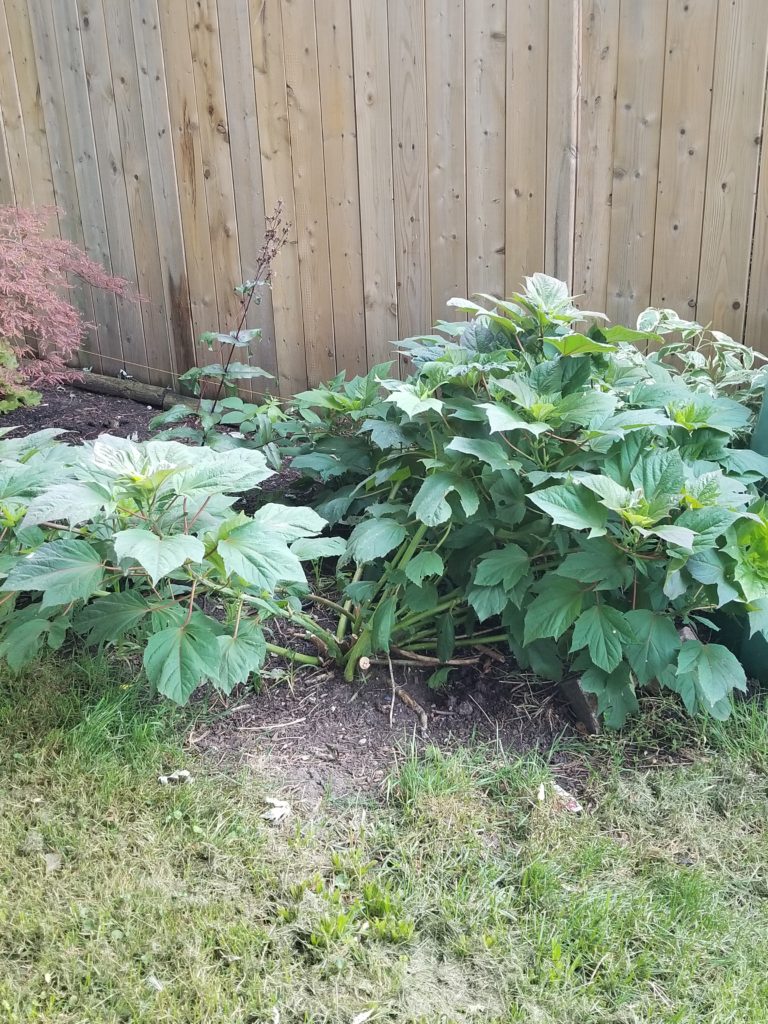
My hibiscus took a beating too. Hopefully next year I’ll remember to put a plant support around it. I think when they are planted in full-sun they can take a bit more wind and rain, but there’s no such thing as full-sun in my yard so it’s in part-sun and making do.
The Waterfall!
In case you somehow missed my bragging all week, I made the most awesome waterfall last weekend.
It’s made with broken shovel heads and honestly I love the thing. You can see how I made it here>>>Broken Shovel Waterfall – With No Welding!
Have a fabulous Sunday!

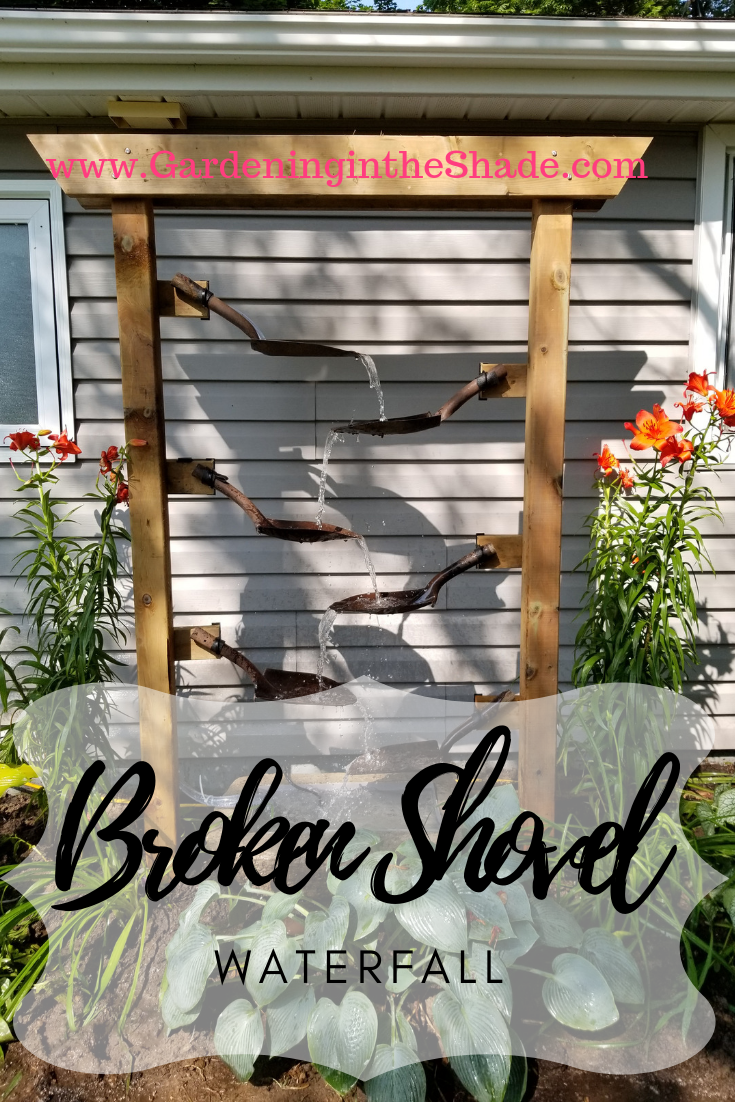
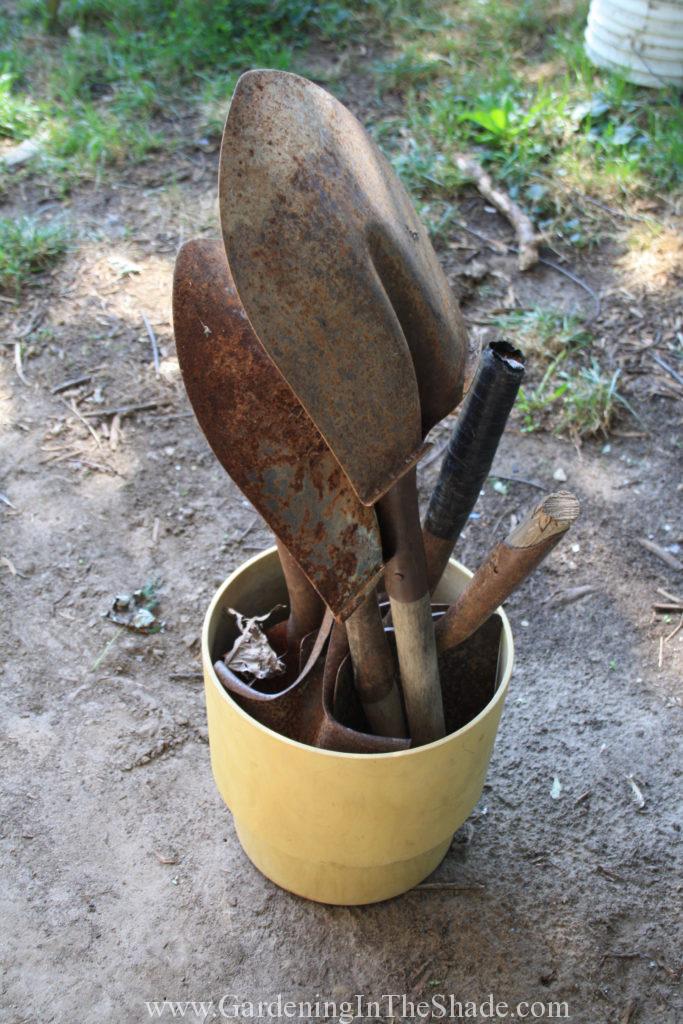
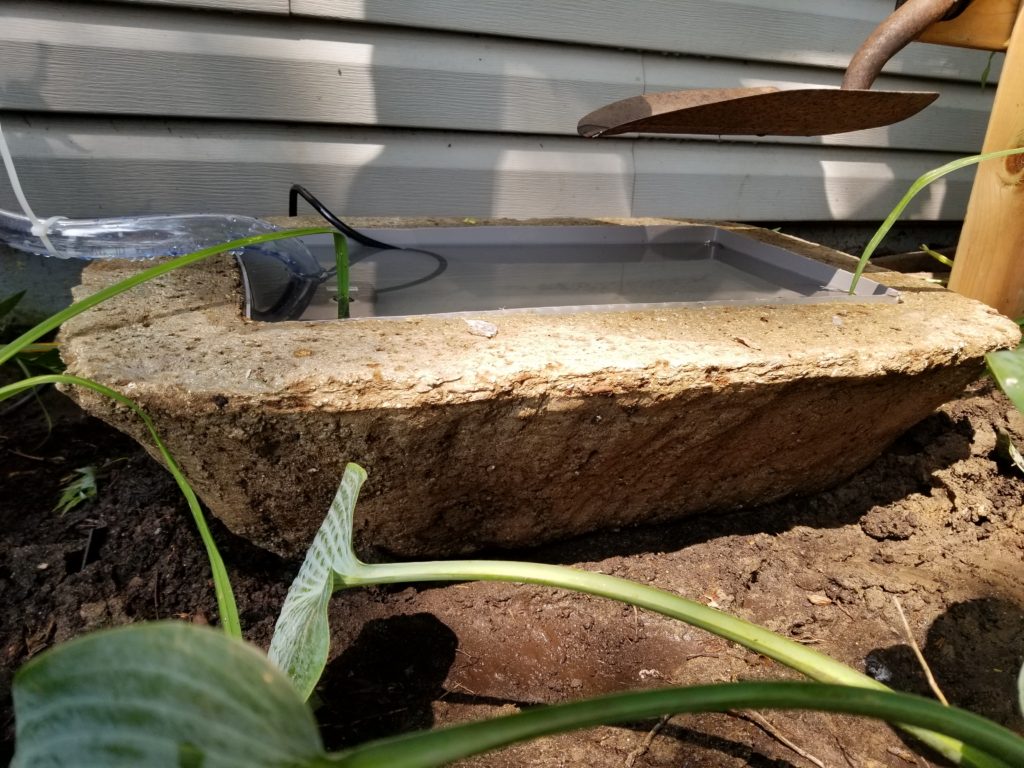 The Basin
The Basin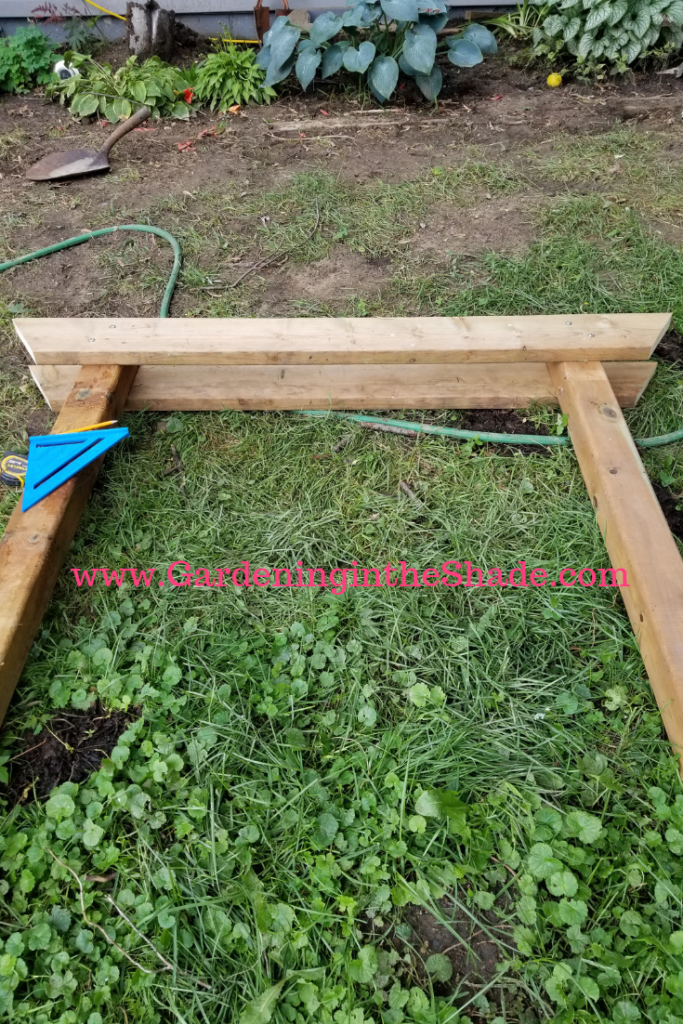 The Waterfall
The Waterfall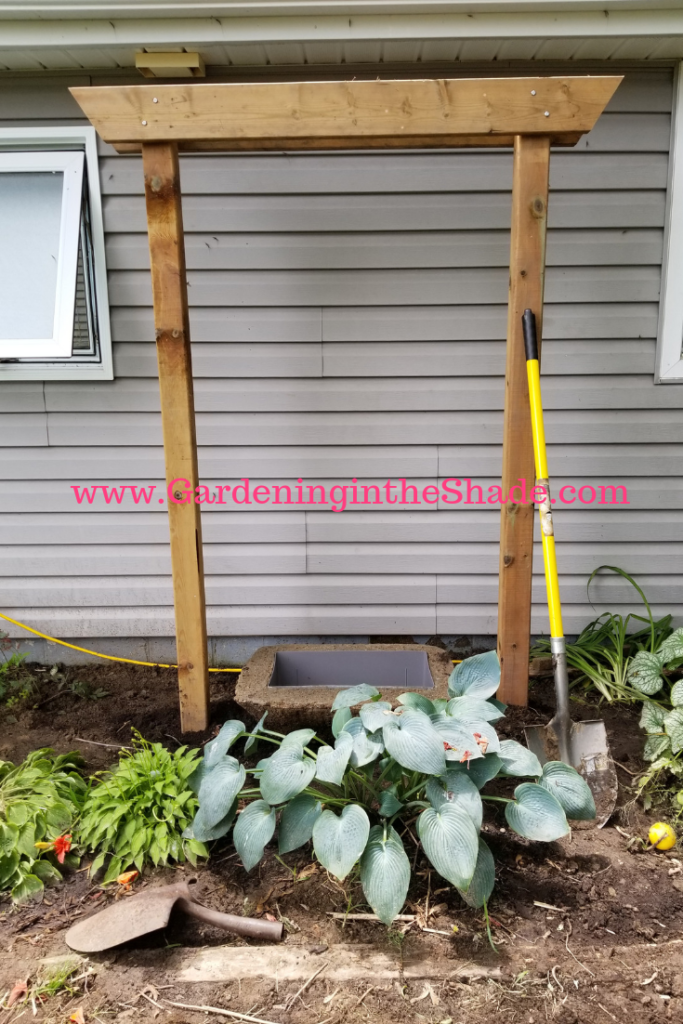
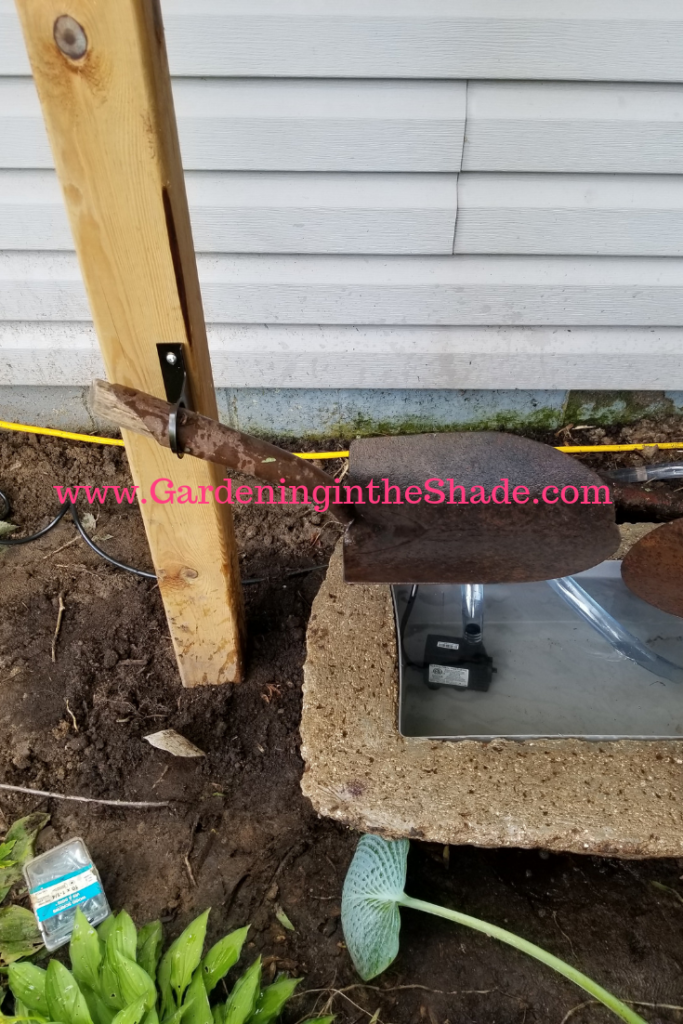
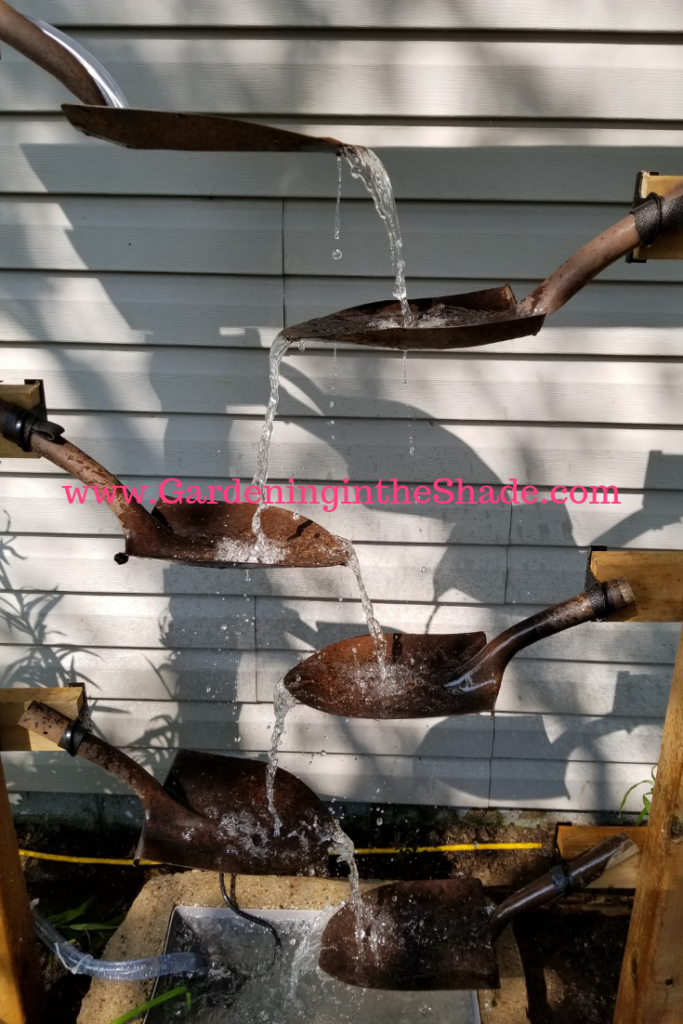
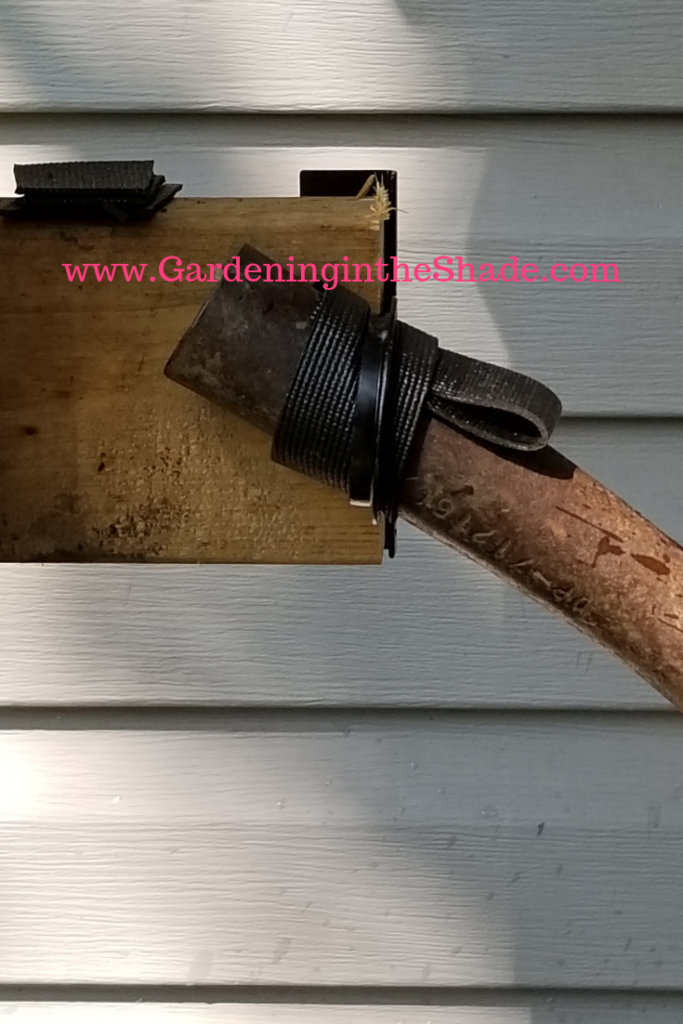
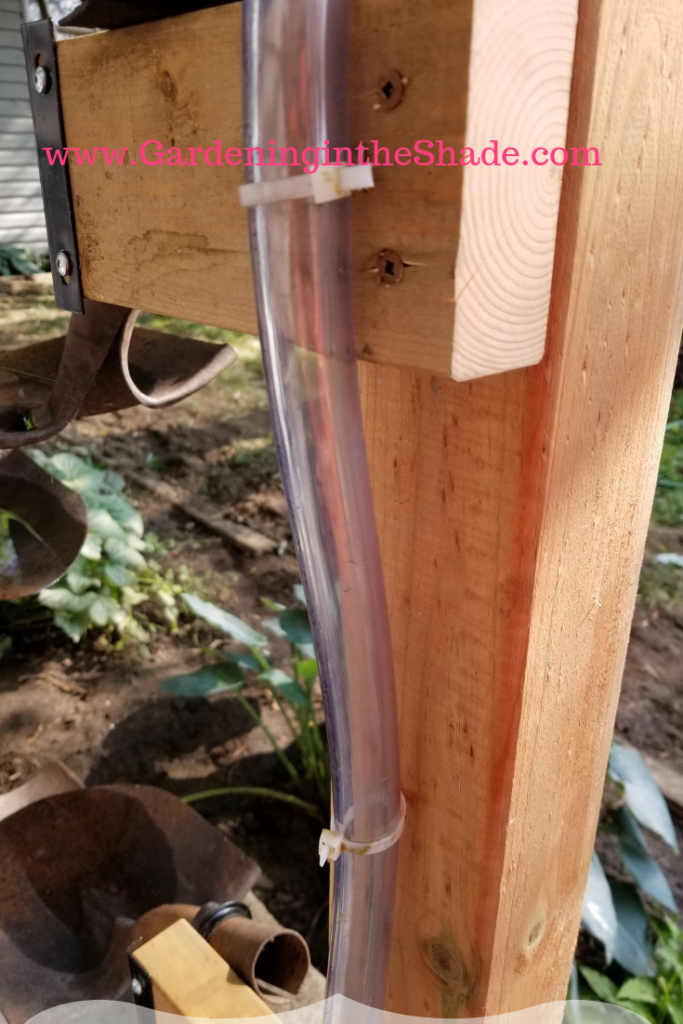
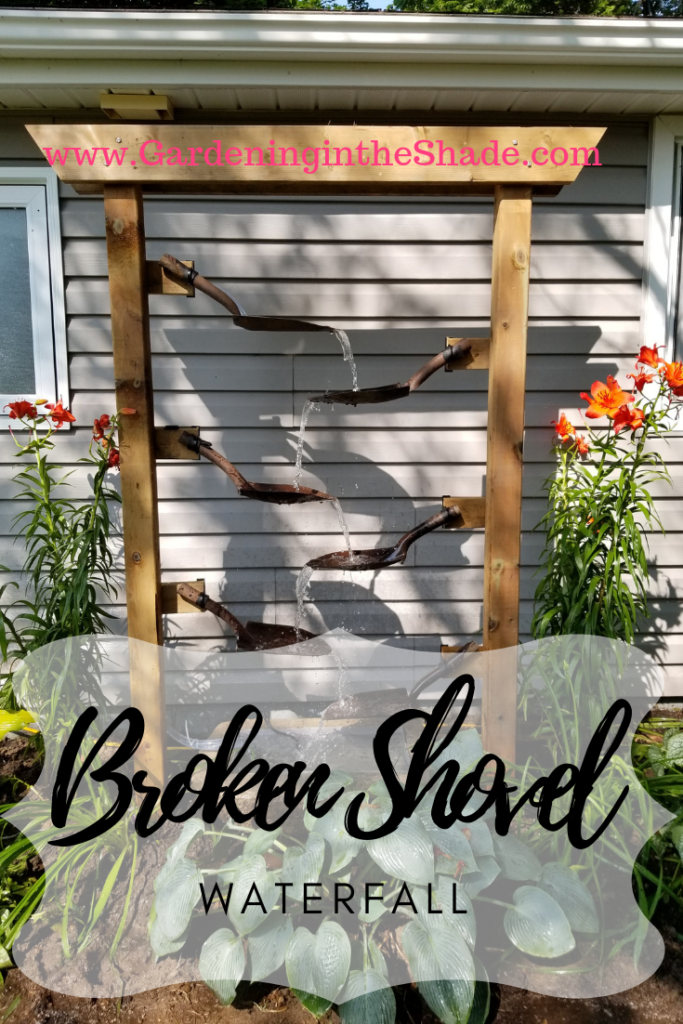
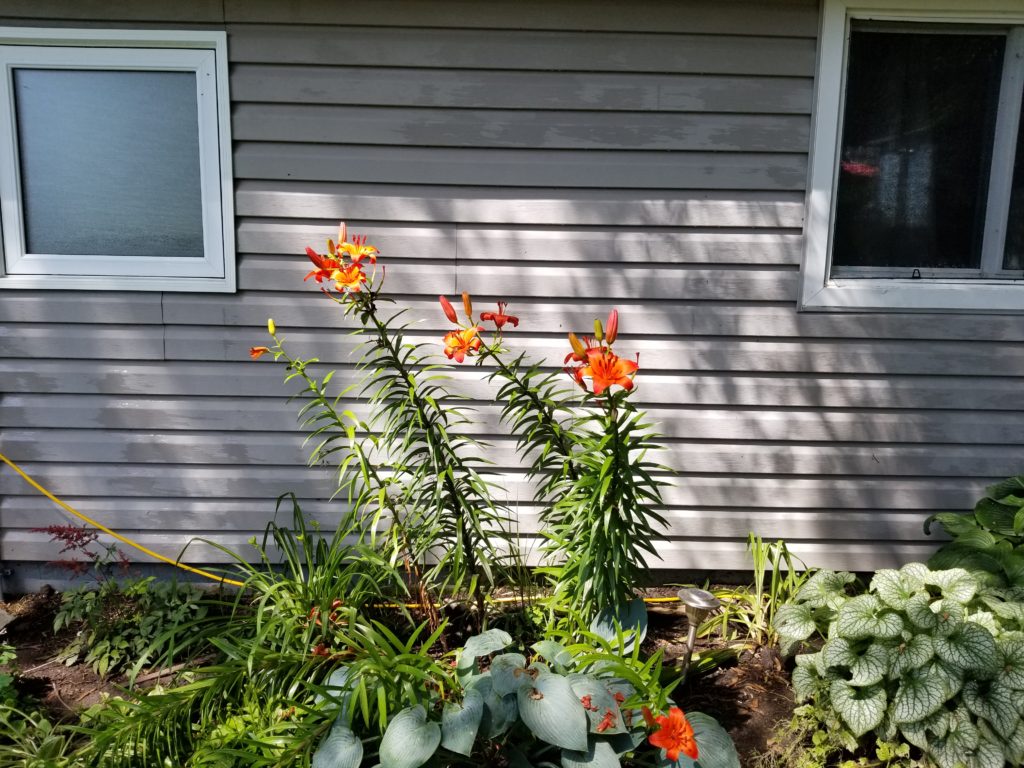

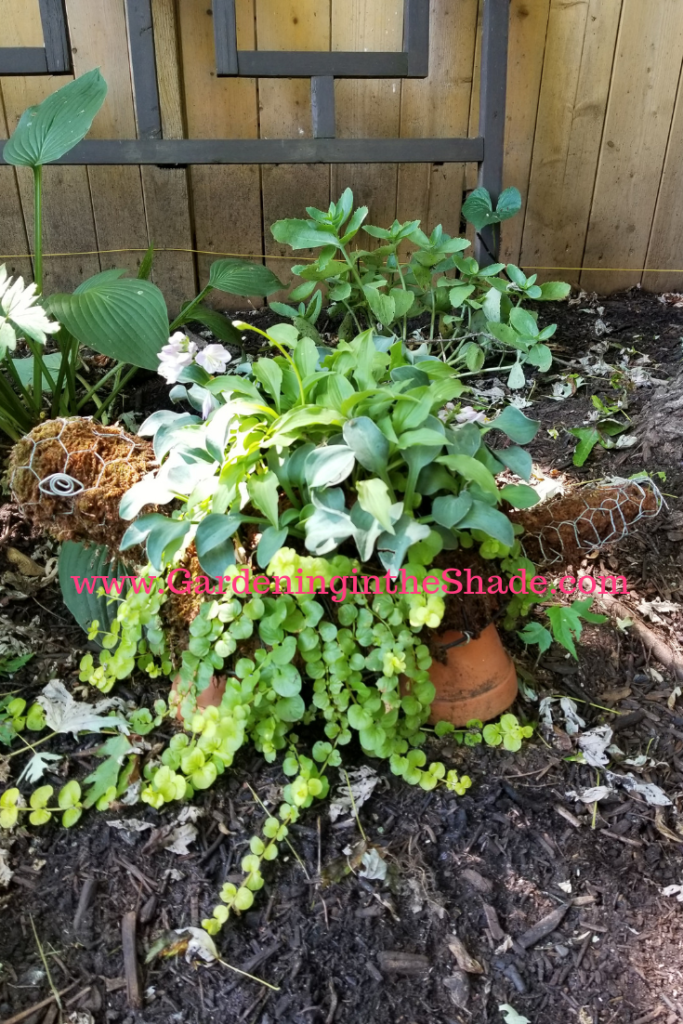
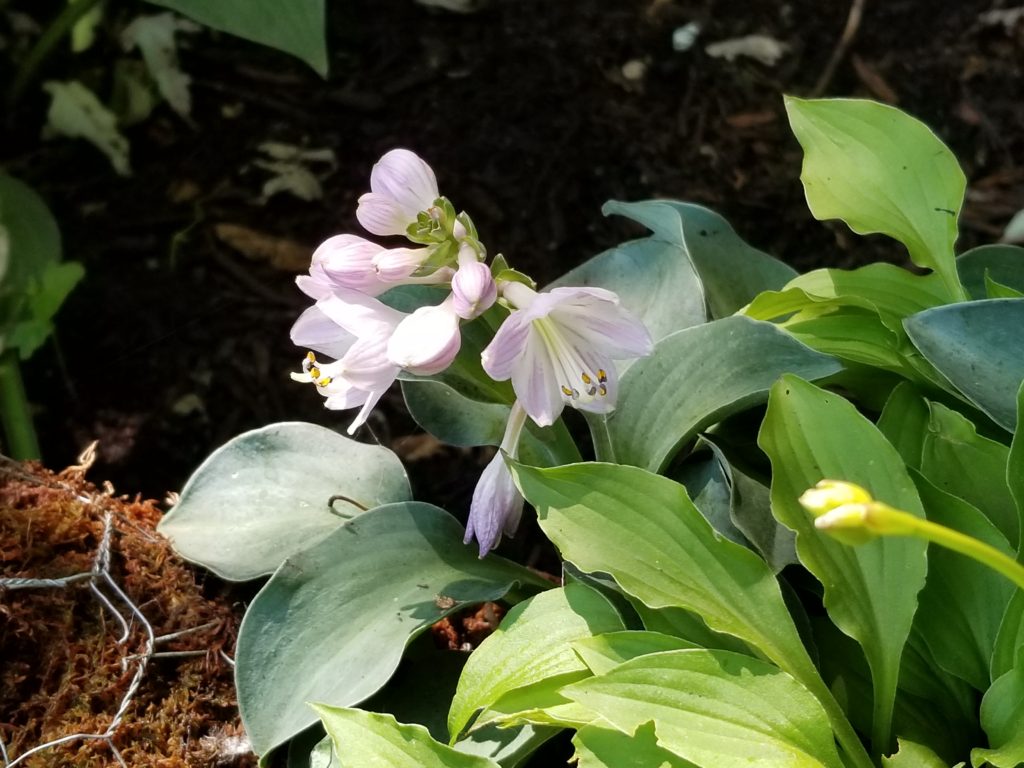 I like the flowers on all hosta, so I was shocked to find out a couple of years ago some people cut the scapes off before they can bloom! Above is a close up of the bloom on Blue Mouse Ears.
I like the flowers on all hosta, so I was shocked to find out a couple of years ago some people cut the scapes off before they can bloom! Above is a close up of the bloom on Blue Mouse Ears.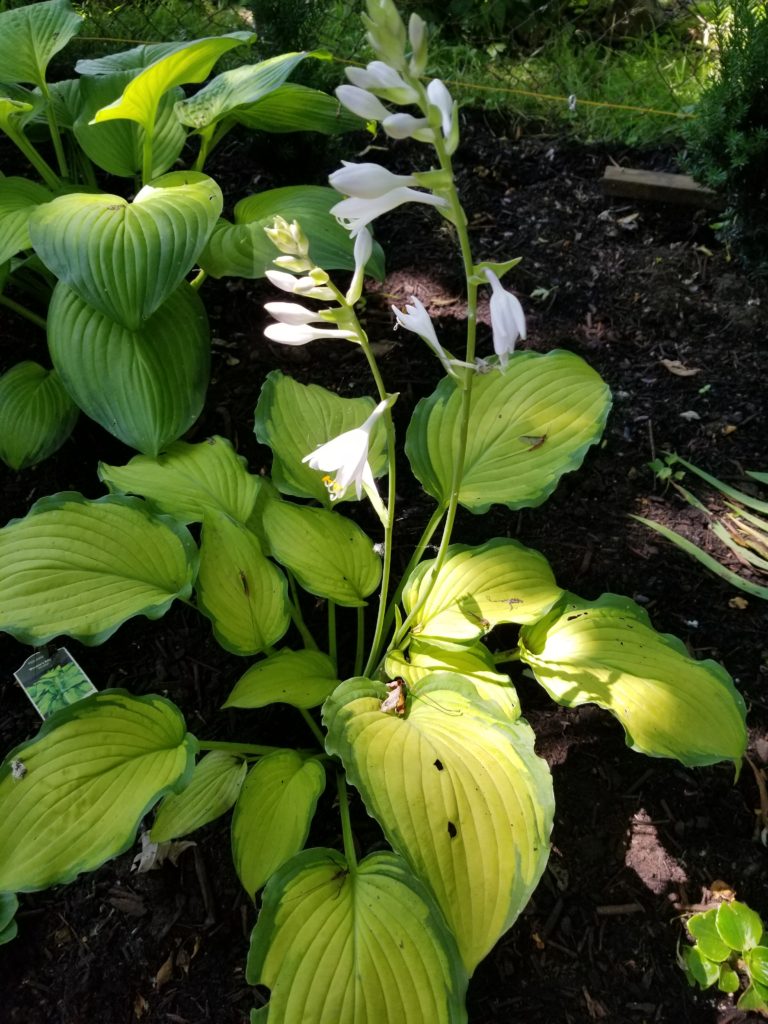
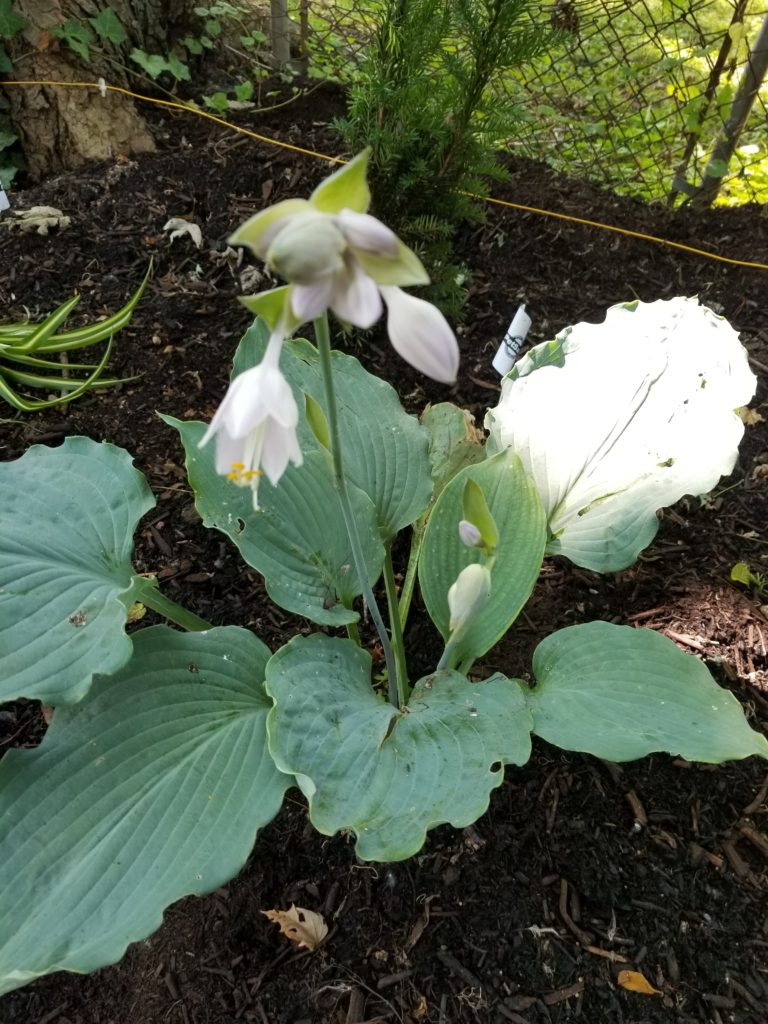
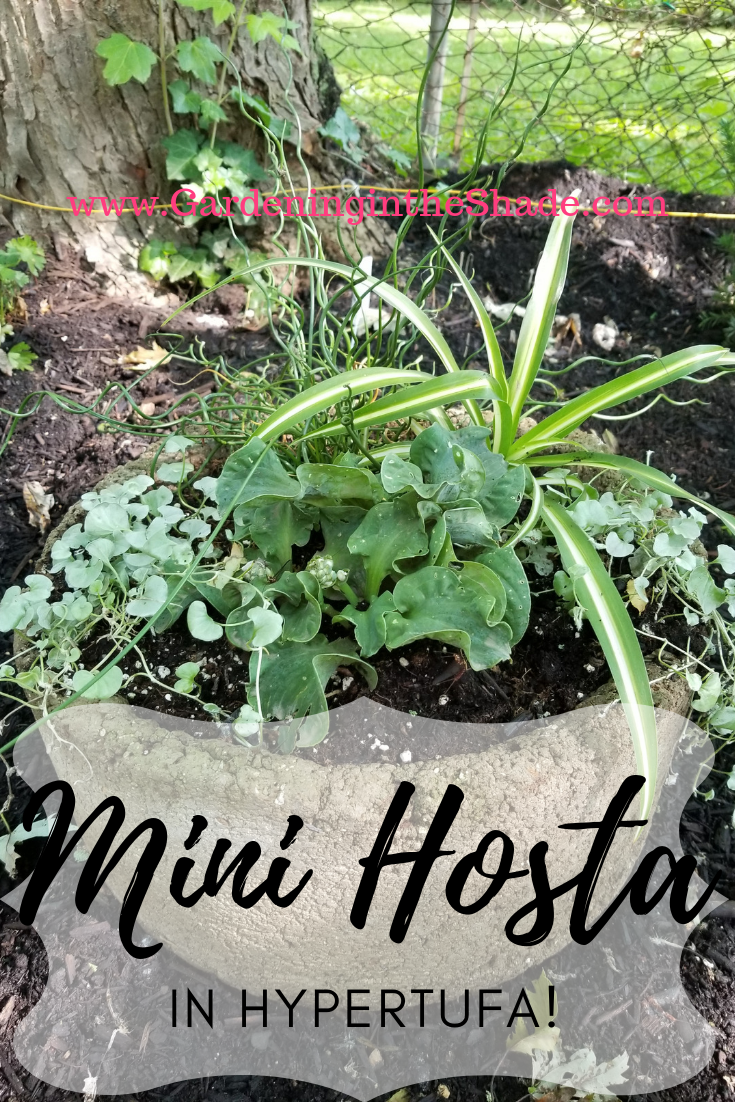
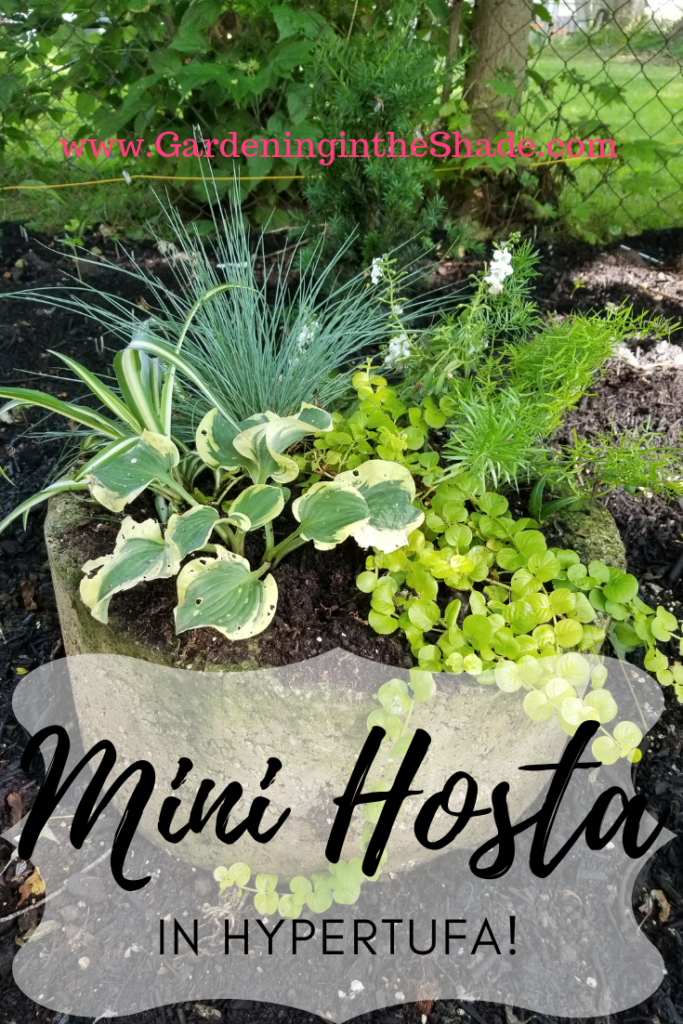
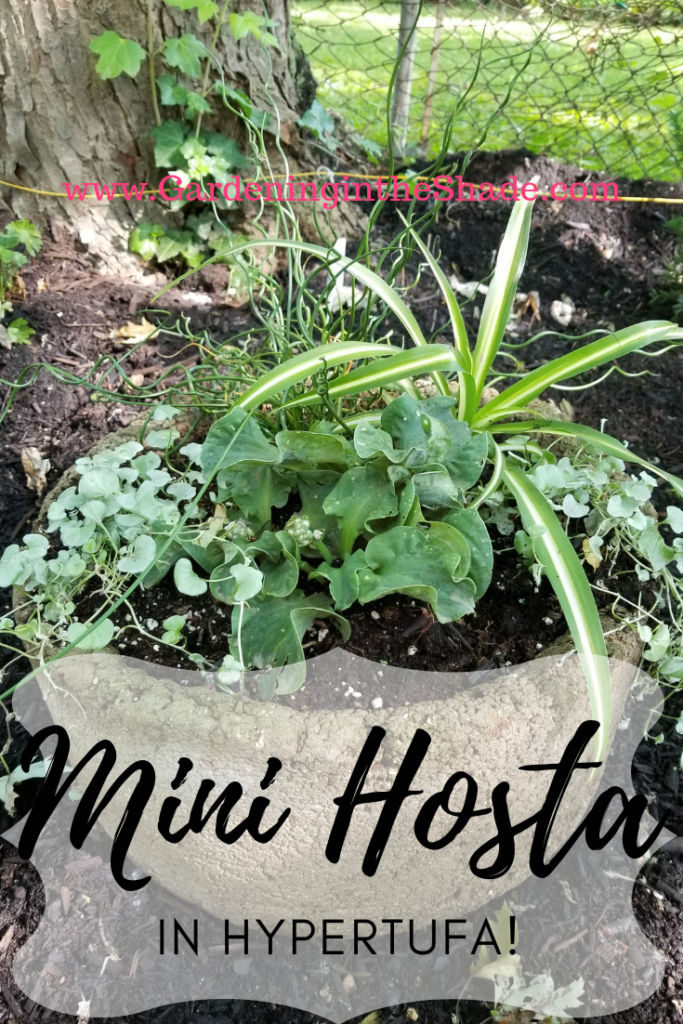
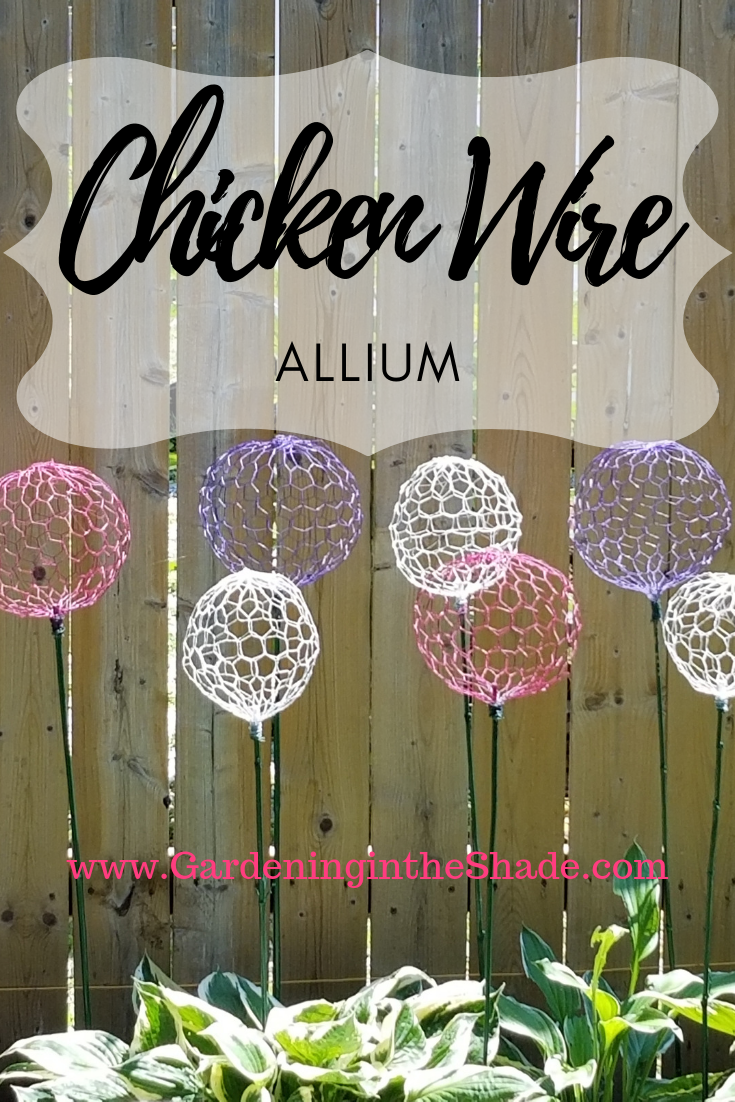
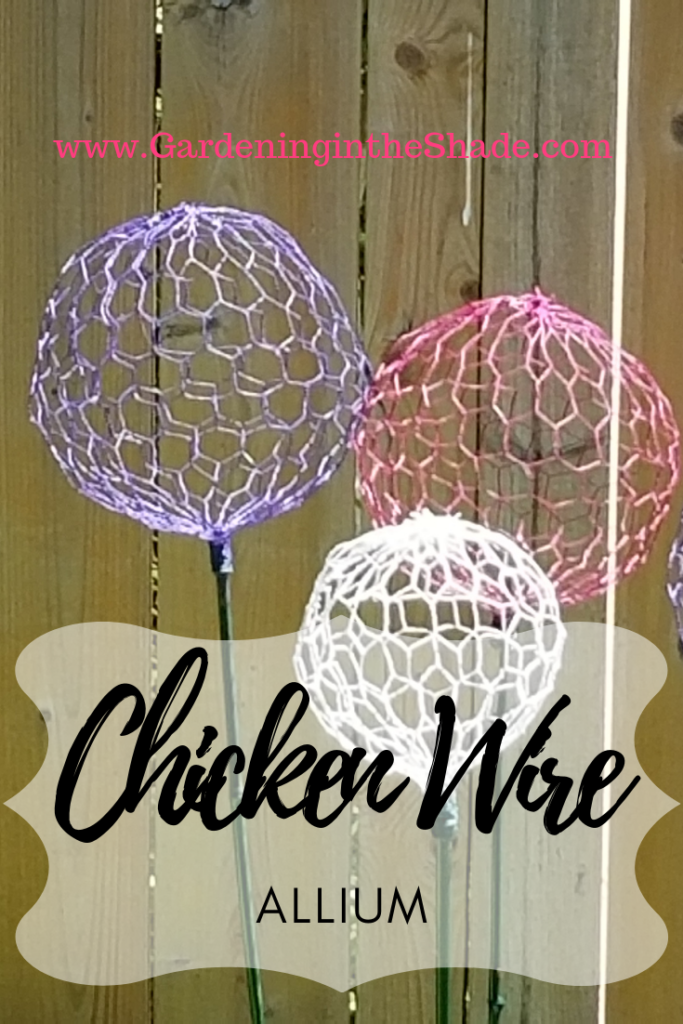
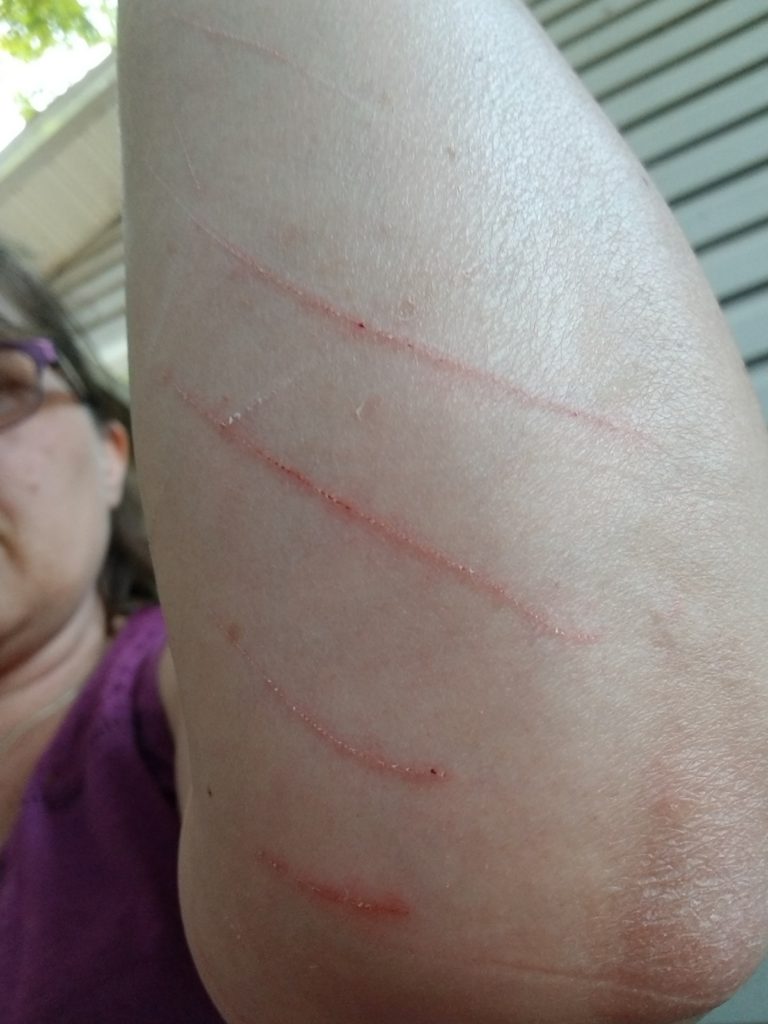
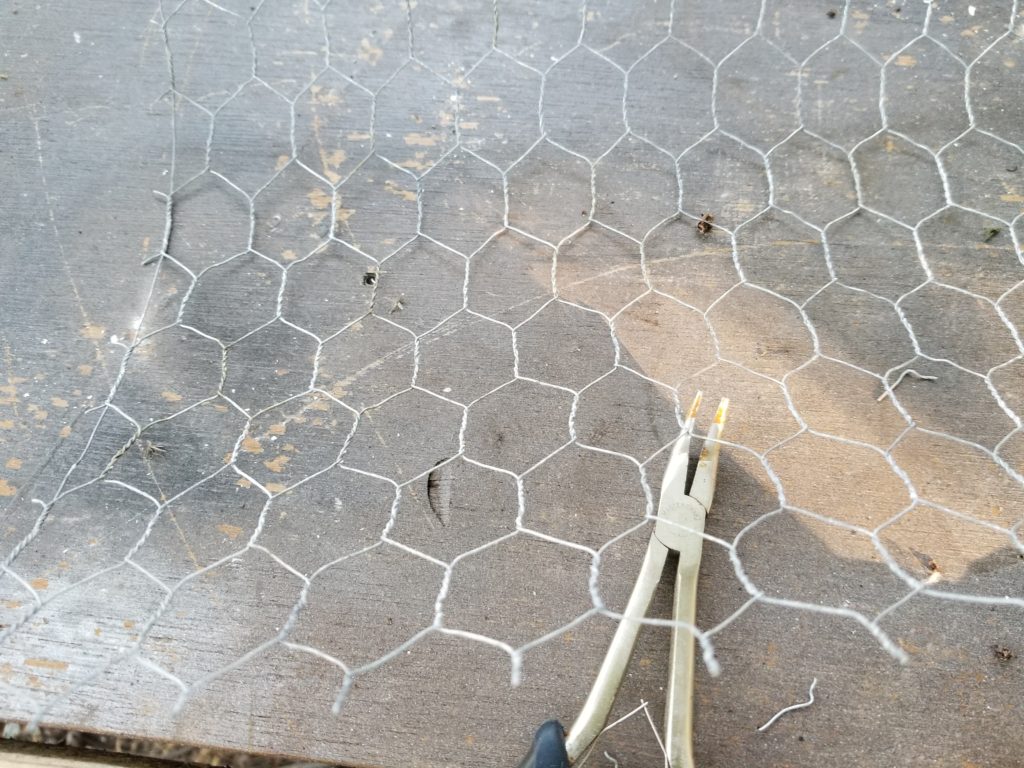 After some trial and error, I found I got the best results with the chicken wire oriented as above. The twisty parts need to be running up and down.
After some trial and error, I found I got the best results with the chicken wire oriented as above. The twisty parts need to be running up and down.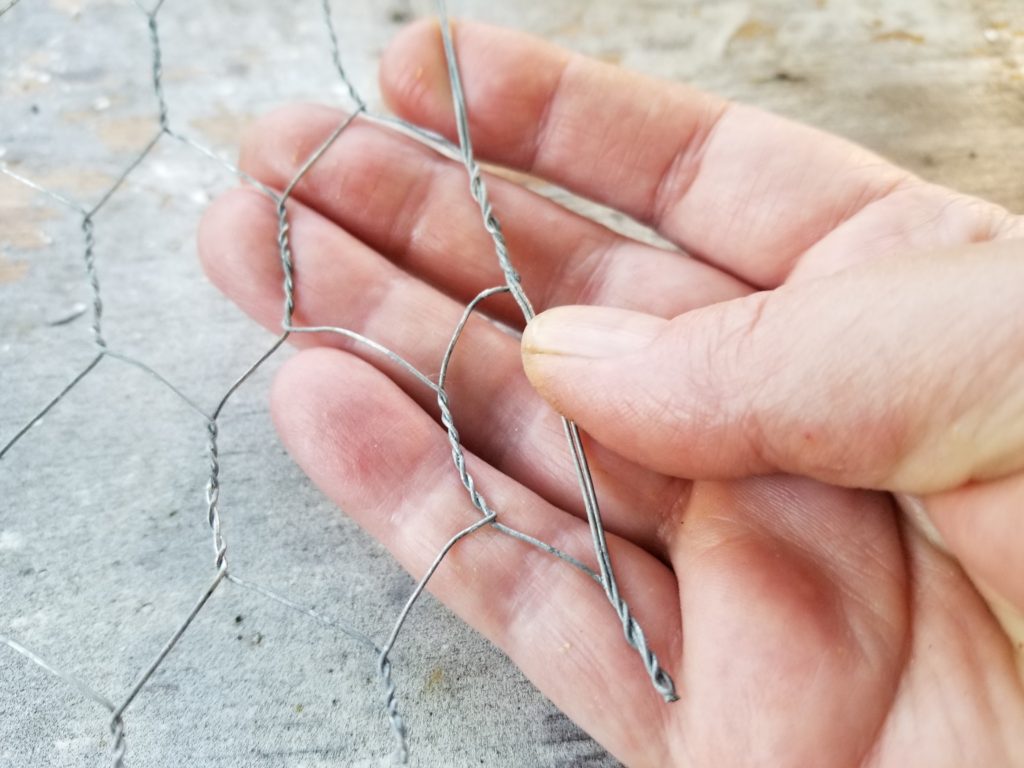
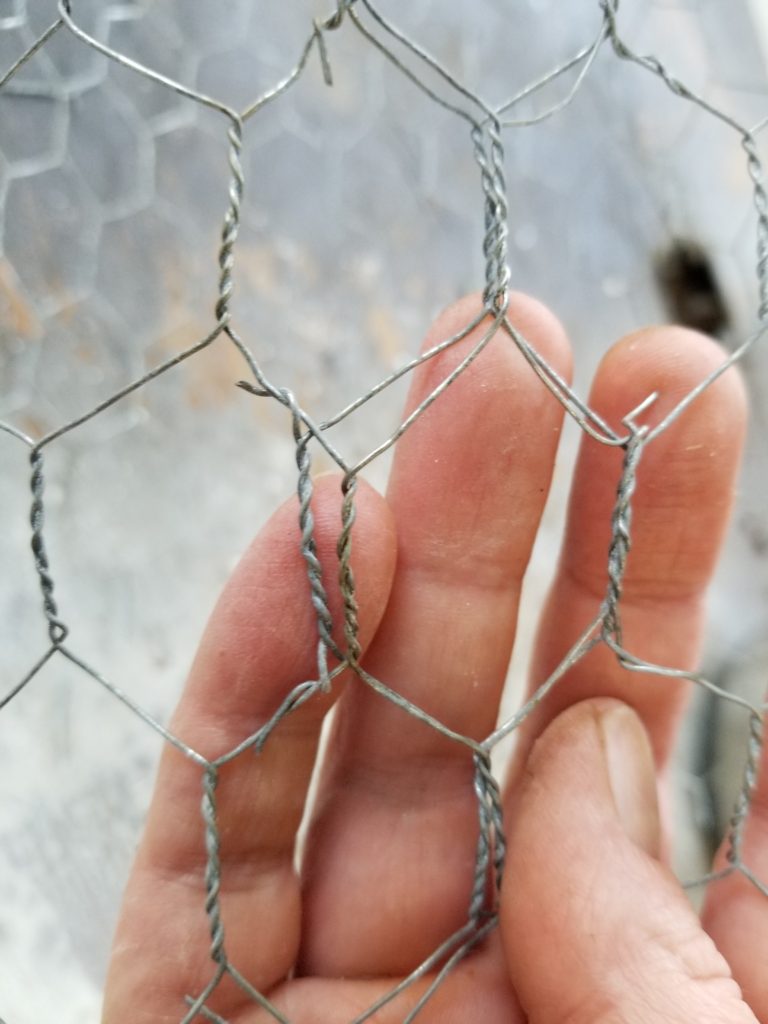
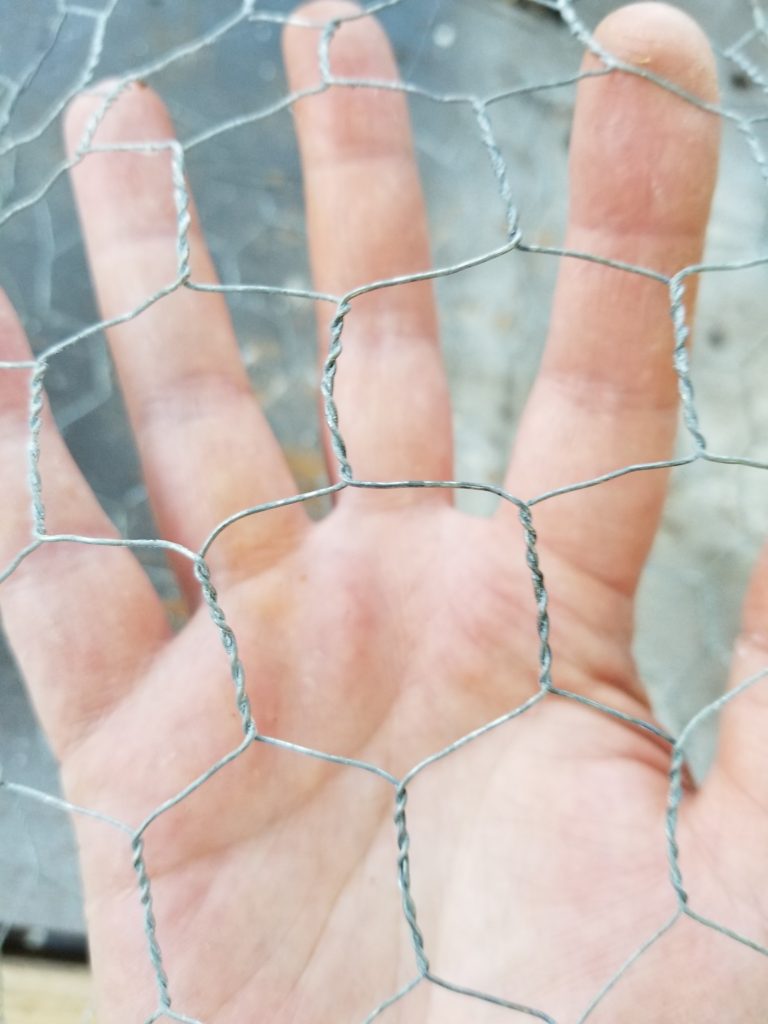
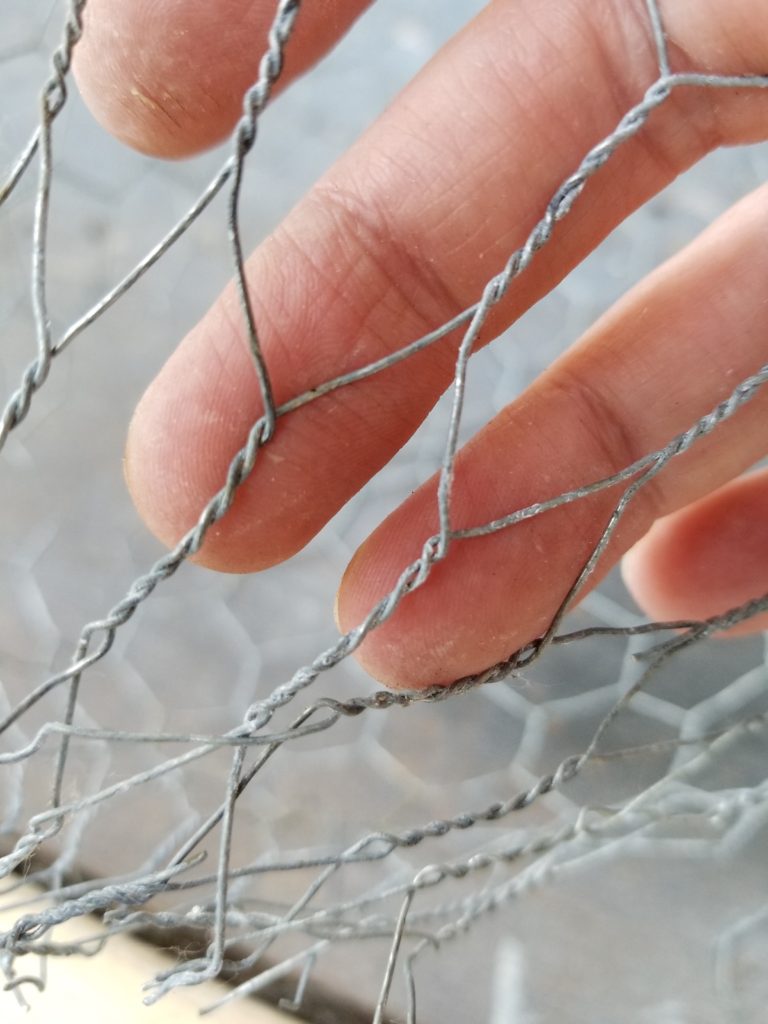
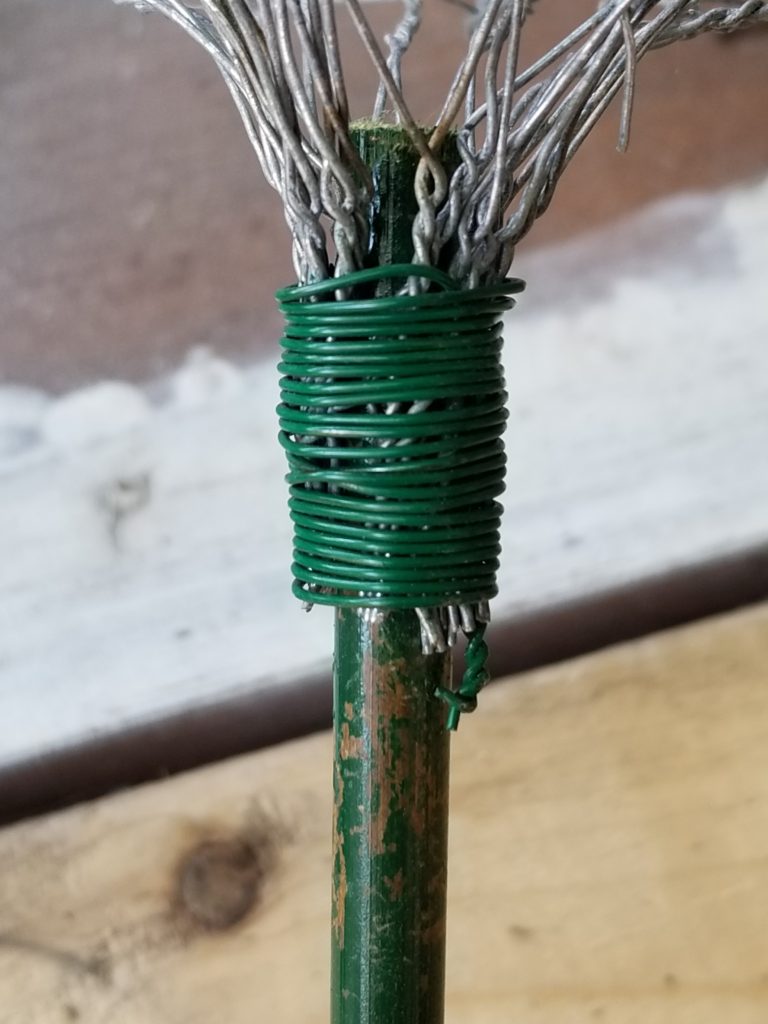
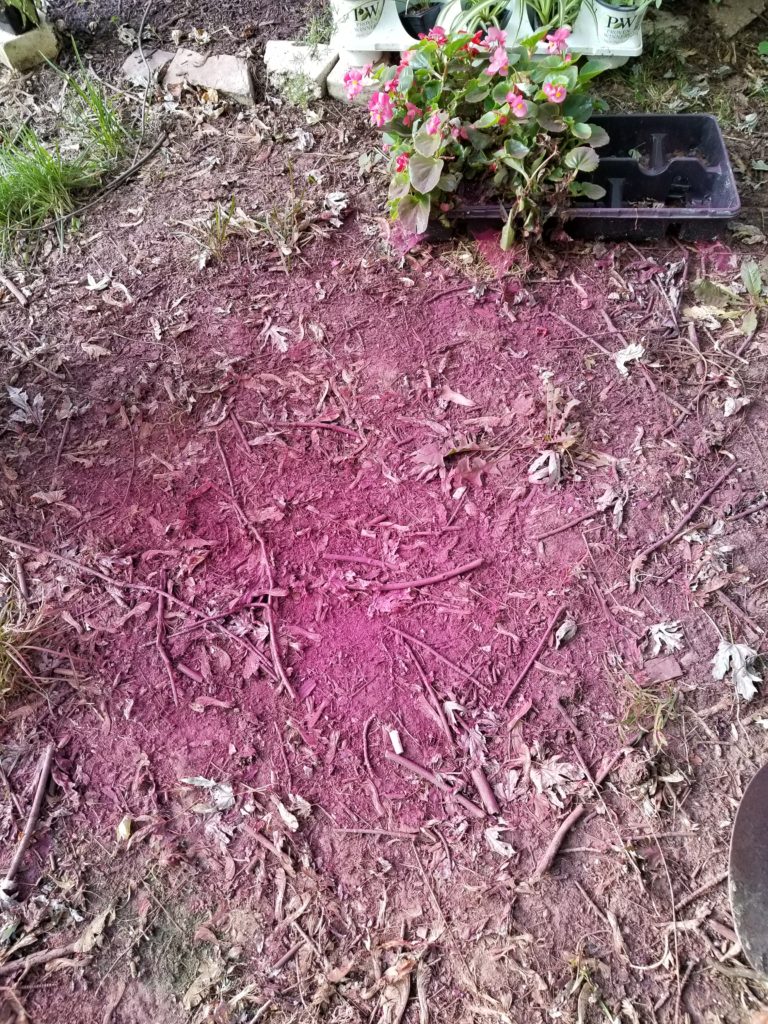
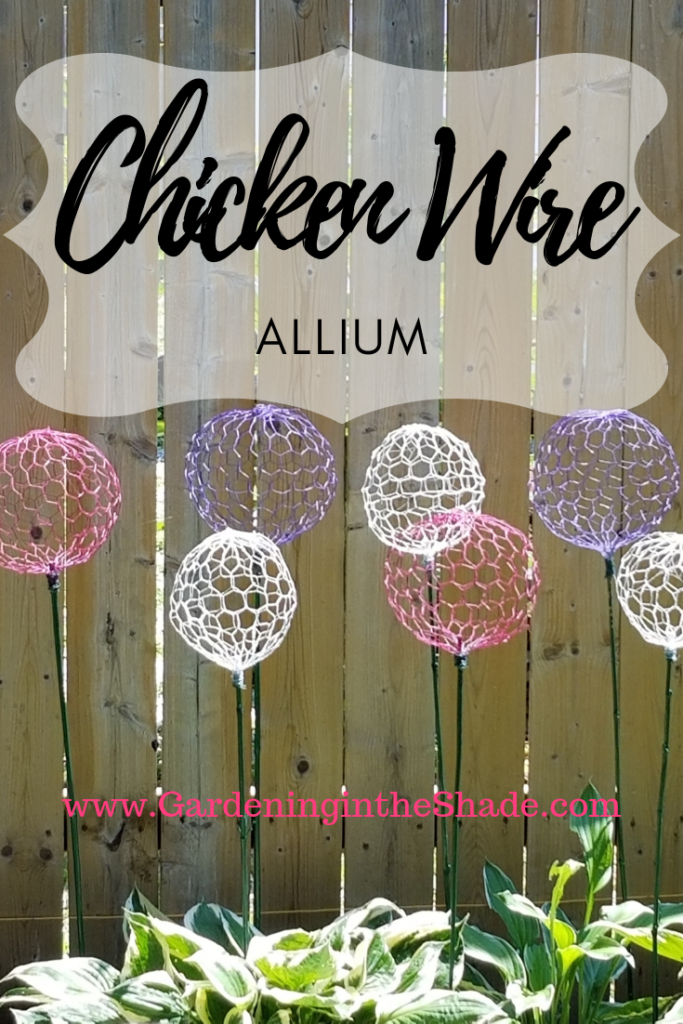 Pick a spot and shove the stakes in the ground to arrange your Chicken Wire Allium any way that makes you happy!
Pick a spot and shove the stakes in the ground to arrange your Chicken Wire Allium any way that makes you happy!